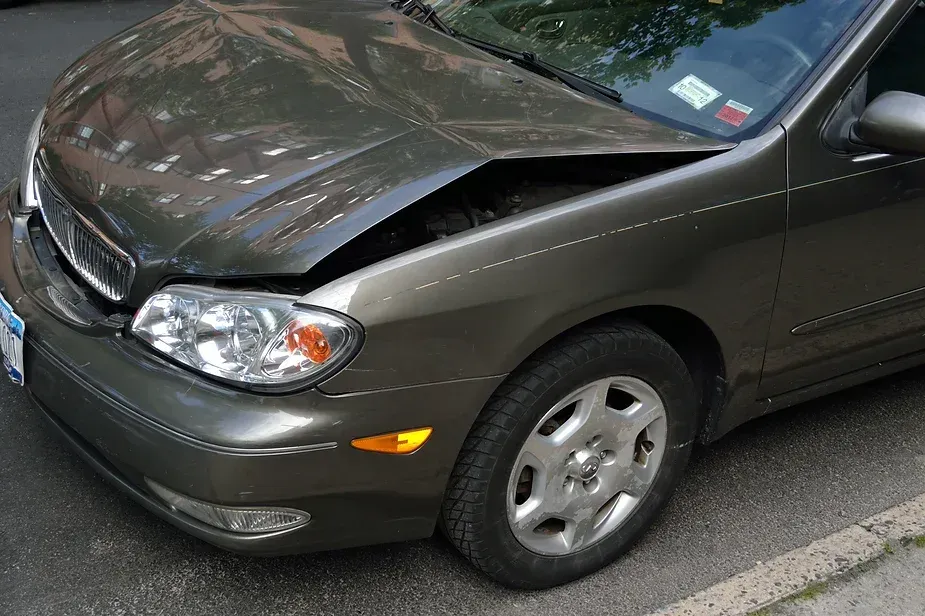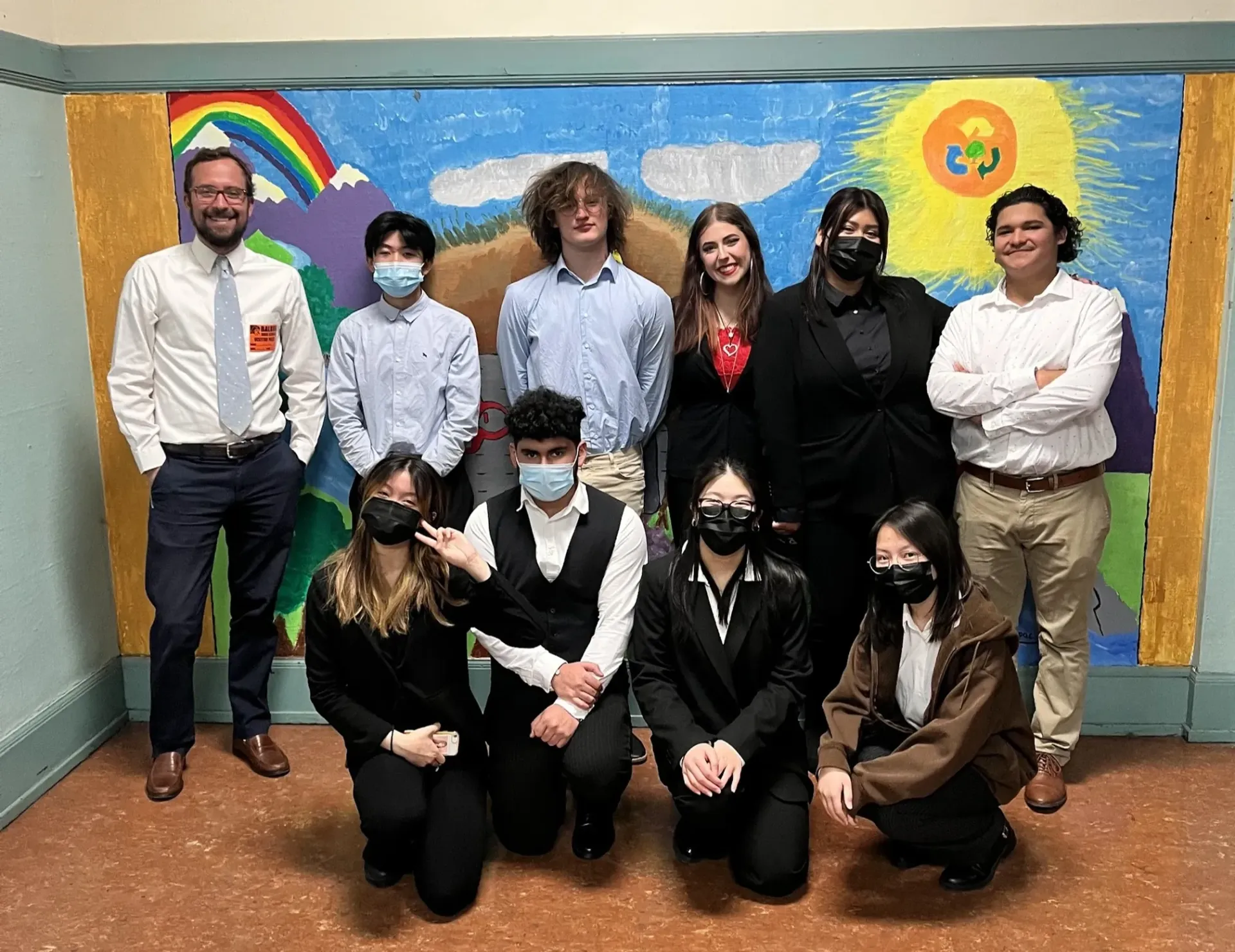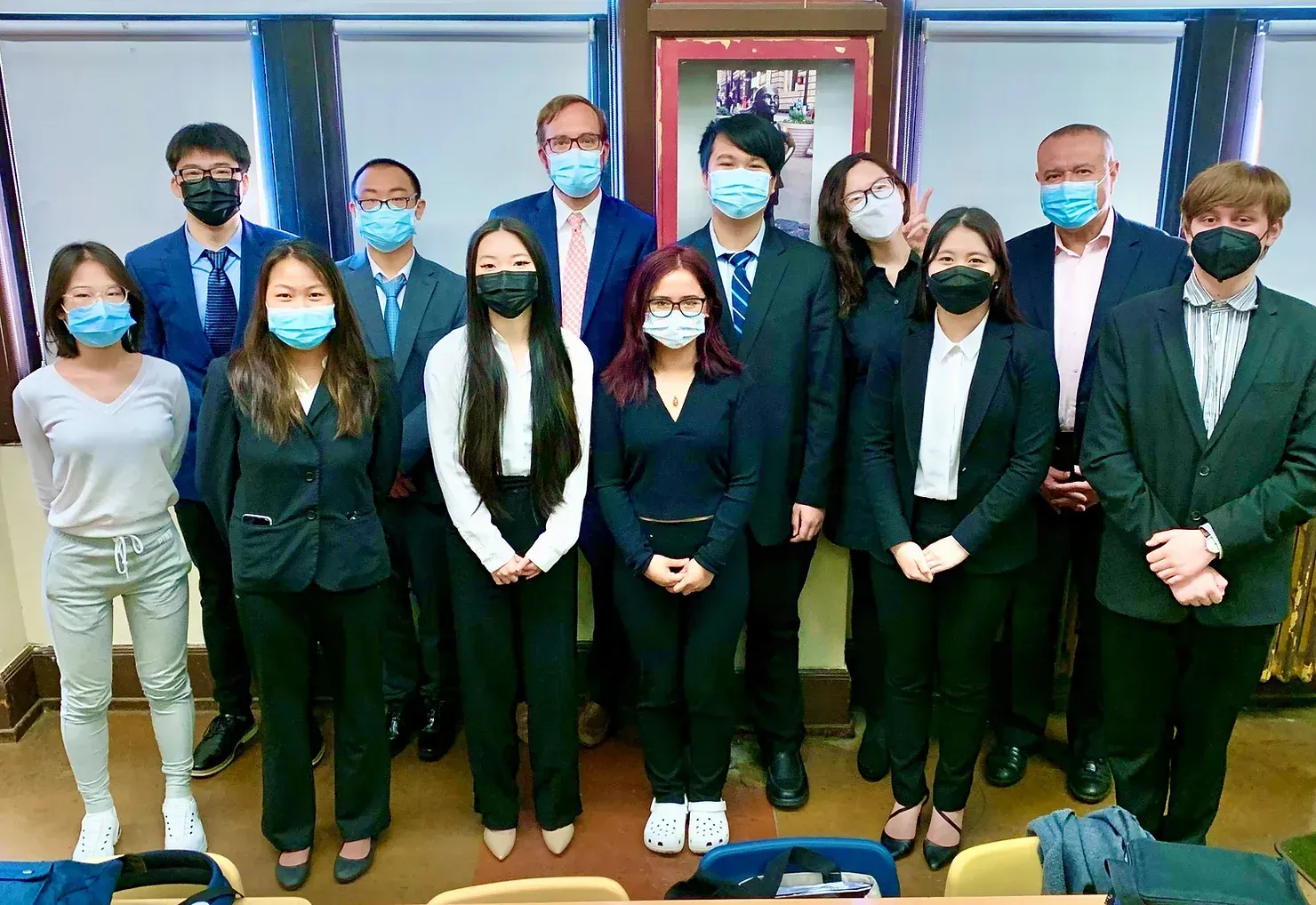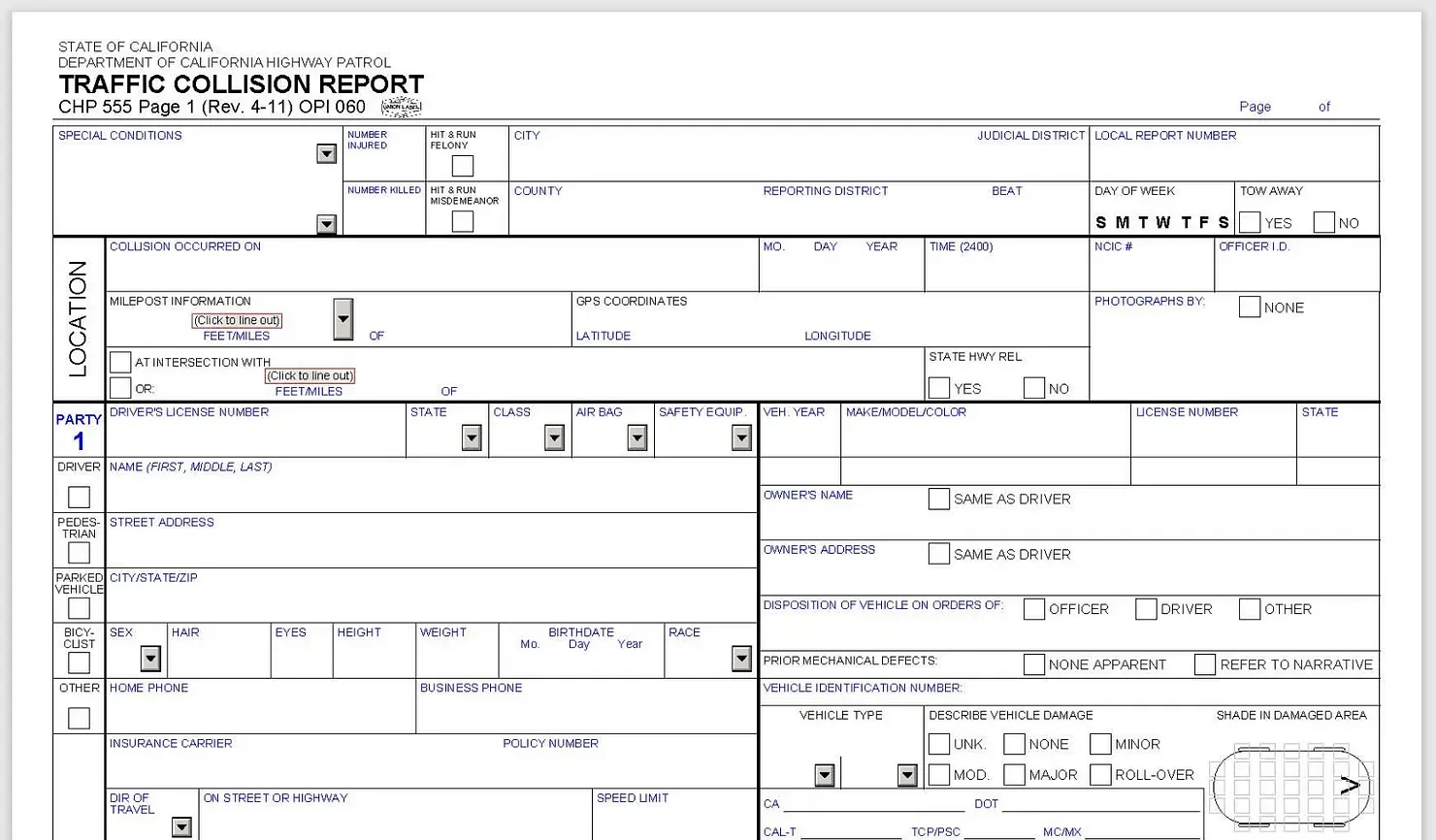What to do after a crash? A guide to personal injury claims - Part 2
Jonathan Harriman • October 1, 2021
What to do after a crash? A guide to personal injury claims - Part 2

This is the second of a three-part series on how to navigate personal injury claims. While car accidents are the most common injury-causing incidents, this information also applies to slip and falls, toxic exposures, and product defects. This article provides guidance and tips on preparing your damage claims and gathering evidence to maximize your recovery if you are ever injured. However, this is not legal advice, and you should always contact a lawyer to discuss your specific case. Consultations are free.
Claims Process
Once a claim is filed with the wrongdoer’s insurer, they will request updates on your condition, treatment, and damages. They will also want copies of your medical records, medical bills, and payroll records. If you have not yet hired an attorney, this is a crucial time to obtain representation. They will have you sign a release so they can gather your medical records and provide the relevant ones to the insurer.
When your injuries stabilize, the insurer will be ready to start negotiating a settlement. Before you are in a position to negotiate, you must ensure that you have explored all aspects of your claim and gathered information and documents in support of each category of damages. The most common damage categories are:
· Medical Costs (Past and Future)
· Wage Loss (Past and Future)
· Property Damage
· Pain and Suffering
Medical Costs
The most important damages in personal injury actions are medical costs. This includes charges from the hospital, ambulance, doctor visits, surgeries, prescriptions, and medical supplies. You can recover for the entire amount of these costs that was actually paid by you or your insurer – not just the co-pays. However, you should be aware that your insurer has a right to reimbursement for these payments from any settlement or judgment. It is also important to note that you can only recover the amounts actually paid to the medical provider, which are often much less than the amount originally billed.
Insurers and juries often value a personal injury case based on the amount of medical bills incurred. So, cases with large medical bills often result in larger settlements and verdicts. This is yet another reason why you should never put off treatment for your injuries. Juries can award damages for both past and future medical costs, so it is important to talk with your doctors about their plans for future treatment and the expected cost over your lifetime.
Wage Loss
People who are injured often need to take off time from work to recover. Talk with your doctor about time off for recovery and request a note so you can provide it to your employer. Even if your employer offers paid sick days, you can still make a claim for this time. It is very important that your employer properly classify you as “out-sick” in order for you to recover, so make sure to let the human resources department know about the injury and the expected recovery time. Keep track of the days you missed from work, including half-days when you had doctor visits.
You may also be able to recover for future wage loss if you will not be capable of performing your job in the future as a result of your injuries. For example, a back injury that results in a heavy lifting restriction may prevent you from working as a construction worker. In this case, future wage loss is determined by the difference between the pre-incident wage and the post-incident wage in a more suitable job, multiplied by your expected work life.
Property Damage
Property damage includes the amount of damage that your vehicle sustained in the crash along with any damaged items of personal property such as mobile phones, clothing, etc. It is important that you take pictures or videos of any damage as soon as possible after the incident to support your claims. While the insurance company often handles the repairs to your car, it is important that you keep documentation showing the repair costs.
For personal property, you should explore repairs before replacing the item. If a repair is not available or too costly, you should purchase a replacement item of a similar cost/quality as the damaged item. If you decide to upgrade, you should gather documentation of the cost of a comparable item, and agree to limit your claim to this amount. While most insurers will only offer compensation for the depreciated value of your personal property, you should push back against this when negotiating a settlement and request the full replacement amount.
Pain and Suffering
There is no formula or objective way to determine pain and suffering damages. Instead, juries are asked to calculate this figure based upon the evidence they hear at trial. While the amount of pain is highly relevant, jurors can also consider emotional distress, disfigurement due to scars, loss of use of a body part, inconvenience, and grief when calculating these damages. While these damage awards are dependent upon the evidence presented at trial, studies have shown that juries often use the medical cost and wage loss numbers as a basis for pain and suffering. So, the larger the medical costs and wage loss, the larger the pain and suffering award.
Punitive Damages
Punitive damages are not available in most personal injury claims. These damages are only available where the person responsible for the incident acted with malice, oppression, or fraud. While unusual, punitive damages may be available where there is evidence of driving under the influence or road-rage. Even then, the amount of punitive damages depends on the wealth of the responsible party, and they cannot be paid by an insurance company
Apportioning Responsibility
In many incidents, there are multiple parties at fault. Sometimes, the injured party may also be partially responsible. When this is the case, responsibility is apportioned – or split – between the parties involved. When two different wrongdoers are responsible for the incident, they will share the cost of your damages and will work out the split amongst themselves. If you are partially at fault, your damages will be reduced by that percentage. For example, if you incurred $1,000 in medical bills but you are 25% at fault, your maximum recovery for these bills would be $750.
If someone alleges that you are partially at fault, it is up to you to defend yourself against this allegation with evidence. This is where witness statements and recorded party admissions come into play. Provide this evidence to your attorney and work with them to combat the allegations to maximize your recovery.
This is not legal advice. You should always contact a lawyer to discuss your specific case. Consultations are free.

There is a new law in the State of California that prohibits cars from parking within 20 feet of marked and unmarked crosswalks. California Vehicle Code section 22500(n) prohibits parking "[w]ithin 20 feet of the vehicle approach side of any marked or unmarked crosswalk or within 15 feet of any crosswalk where a curb extension is present." Bill Text - AB-413 Vehicles: stopping, standing, and parking. (ca.gov).

California is known for its progressive stance on cycling infrastructure, aiming to make roads safer for both cyclists and motorists. Bike lanes are common across California cities and they provide a designed safe space to ride. At times, drivers ignore the bike lane and pull over, blocking the bike lane. This can have significant legal implications.

I have been serving as a Law Academy mentor since 2008 at Balboa High School in the Excelsior District of San Francisco. This amazing program gives high school students access to practicing attorneys and judges so they can gain an understanding of the legal system and the role of attorneys in our society. The Law Academy is run by the San Francisco Unified School District in partnership with San Francisco Bar Association and is designed to provide students with a comprehensive understanding of the legal system and the practice of law. It includes a variety of activities and lectures that are designed to give students a broad understanding of the legal profession. The program covers topics such as legal ethics, criminal law, civil law, and constitutional law. In addition to their classes, the Law Academy includes a summer internship program. During the internship, students get first-hand experience in various activities like court hearings, depositions, and client meetings that are designed to help them gain an understanding of the day-to-day duties of attorneys. Students also have the opportunity to meet and interact with practicing attorneys, judges, and other legal professionals. In addition to the classes and internship program, students also have the opportunity to visit law firms and courthouses to see first-hand how law is practiced in the real world and to interact with legal professionals in their workplaces. The Law Academy is an excellent program for students interested in pursuing a career in law. I wish I had something like it when I was in high school. Please let me know if you are interested in volunteering or donating (contact@harriman.law). For more information about the Law Academy: SFAM Q2 2022 - Lauding Law Academy’s 25 Years of Success - The Bar Association of San Francisco (sfbar.org) Law Academy | SFUSD

My wife and I share a car with autonomous driving features like lane-keep assist and automatic emergency braking. Sometimes these software features are lifesavers, sometimes they are infuriating. Last week, I was driving on a quiet residential street when the emergency braking engaged and abruptly slowed the car from 25 mph to 5 mph. There was nothing in the way so I have no idea what set off this autonomous feature. But no harm no foul and I got back up to speed and drove home. More concerningly is the lane-keep assist feature which automatically applies pressure to the steering wheel to keep the car in what the computer thinks is the lane. We live in Oakland and the city freeways have some rough spots where I find myself fighting with the lane-keep assist over what the actual lane is. If I was not paying better attention, this autonomous feature could have slammed us into the vehicle next to us and caused a major crash. Self-driving technology is in its infancy and, like a child, it has a lot to learn. Unlike children, the federal and state governments have given this technology a license to operate on American roadways. Unfortunately – but not unexpectedly – fatal mistakes have occurred. Tesla in self-driving mode hits child mannequin: https://youtu.be/3mnG_Gbxf_w Uber in self-driving mode hits and kills pedestrian: https://youtu.be/XtTB8hTgHbM IIHS Autobrake Tests - Wins and Fails: https://youtu.be/TJgUiZgX5rE Harriman Law is currently working on cases where self-driving technology by Tesla Motors and Waymo (formerly Google’s self-driving car project) may have malfunctioned causing serious collisions. Our team of experts drills down into the data when evaluating self-driving car crashes. If you or your family have been injured because of a self-driving car malfunction, please give us a call.

Twenty-five years ago, the Bar Association of San Francisco launched the Law Academy to introduce high school students to the legal system and attorneys in their community. Today, students can select Law Academy as their "pathway" - like a mini-major - for their junior and senior years, learning about the legal system and their rights, and working with practicing attorneys and judges on their skills. Jonathan Harriman has served as a mentor and teacher for Law Academy Students at Balboa High School for the past 13 years. Below is an excellent article by Kathleen Guthrie Woods on the history of the Law Academy and its impact on students over the past twenty-five years. SFAM Q2 2022 – Lauding Law Academy’s 25 Years of Success – The Bar Association of San Francisco (sfbar.org) For more information about Law Academy, check out the Bar Association of San Francisco's website: Law Academy – The Bar Association of San Francisco (sfbar.org)

Traffic collision reports, also known as TCR are one of the most vital documents to have when in a crash. Continue reading to understand the significance of these. Who: When involved in a collision, you should call your local police to request that they investigate and prepare a traffic collision report. As part of their investigation, they will come out to the scene of the crash, take statements from the parties involved and any witnesses, take measurements, prepare diagrams, and ultimately determine who was at fault for the crash. Copies of the TCR may be viewed by the parties involved (or their parents if the party is a minor), vehicle owners, insurance companies, and attorneys. What: Formally called the Traffic Collision Report (CHP 555) in California, this document serves as an essential piece of evidence for us when evaluating your case. The first page consists of the location of the crash, the identity of the parties involved, and details about the vehicles they were driving. The second page is comprised of situational details including the weather conditions, lighting issues, seating position of driver and passengers, if airbags were deployed, if anyone was ejected from the vehicle, if there was evidence of inattention such as cell phones, and whether alcohol or drugs were a factor. The third page generally contains details about any injured parties and statements from the parties about what led to the crash. Often, the investigating officer prepares a factual diagram depicting the roadway, the area of impact (AOI), and the location of the vehicles after the crash. Where: At the crash site, the police will be able to ask questions and survey the area to build a TCR that best captures the scene. When: Just after the crash, call the police so they can investigator and document of facts. Remember to call 911 if you have a serious injury or to advocate for yourself if you are in need of immediate medical attention. Why: The TCR doesn’t just document the details of a collision, rather it aids in your case. In order for an attorney to prove liability - usually in the form of negligence - the TCR is vital. So, if you are involved in a crash, take your time to provide as many facts as possible to ensure the investigating officer will obtain the most accurate information possible. This includes the speed of the vehicles involved, any sudden turns or lane changes, your injuries, and all other details. The more information we have to work with the better, allowing you ultimate closure in results. This is not legal advice. You should always contact a lawyer to discuss your specific case. Consultations at Harriman Law are free.

On the road with plenty of traffic, a bicyclist must prepare in advance for the unpredictable nature of roads. Keep reading to see how you can avoid one of our most common injury cases — bicycle accidents. Check your bike: Before a ride, take a minute to double-check your bike including gears, brakes, tires, and quick releases to prevent malfunction and crashes. I like to ride in a small loop to test my brakes and gears and bunny-hop to feel for play in the wheels. If anything feels off, stop and make adjustments. Being able to safely stop and go provides an extra level of assuredness, especially when making quick maneuvers on city streets. Wear your protection: Your helmet should be on while riding your bike no matter your familiarity with the road or confidence in your abilities. In addition to your helmet, reflective vests and bright-colored clothing allow you to stand out in the sea of traffic. To take your protection to another level, try reflective tape and mirrors on your bike. If you are riding just after dawn or before dusk, make sure that you have a front and a rear light that is charged and flashing. Try to think of what a reasonably careful person would do to prevent accidents. Know your hand signals: Before riding your bike, you should be aware of the basic hand signals of left, right, and stop. Without tail lights, drivers at an intersection can know which way you intend to go if at all. Follow the law: While biking in busy areas, it’s best to know and follow the law to ensure your safety and that of others. Take the extra second to obey the law, including traffic signals and stop signs. This is not legal advice. You should always contact a lawyer to discuss your specific case. Consultations are free.

My name is Joie Ow and I’m a recent graduate of Balboa High School and an incoming freshman at the University of California, Los Angeles. During my time at Balboa High School, I was part of the Law Academy — a 2-year program that educates students through an academic curriculum involving the law and historical cases. An integral part of Law Academy was the professional skills along with real-life experiences that I gained — both of which led to an interest in law for me. Under the mentorship program, lawyers came to school every week and taught the foundational pillars of a professional job from résumé building to interviewing skills. Although I spent my junior year online, I was able to transform the skills I had into confidence as a student. Each student was assigned to a group under a mentor with Jonathan Harriman as my group’s mentor. As he discussed his personal injury field of law, it piqued my interest as a possible career. While I am set to attend UCLA in the fall, I am considering careers in both law and business. Beyond this, I intend to fulfill my interests in law through my summer internship at Harriman Law, providing me opportunities to improve those very skills as well as knowledge that I gained from Law Academy. From drafting demand packages to reviewing discovery requests, I’ve been able to experience a glimpse of what a lawyer like Jonathan does on a daily basis to prioritize clients. Before this internship began, I was unsure of my capabilities but knew my excitement for law was beyond my worries. Starting with the basics of what personal injury law was and what lawyers in this specialty work for, my curiosity and interest grew. Being part of the process for each client, I began to understand how Jonathan worked with them from the time they were injured to when the case is settled, attending to their worries while swiftly bringing closure. Although settlements cannot heal all wounds, it was able to partially compensate for the pain that the injured endured. Out of the compassion and positive outcomes that resulted from these cases, it drew me in as I knew I could partake in these resolutions. As my professional career has just begun, I have all the more to learn about myself and for myself. I hope to gain more experience and confidence in my abilities as an intern through a continuous growth mindset while taking part in cases, developing impactful materials such as demand packages.

Lying – Perjury is a felony and can result in a $10,000 fine and up to four years of jail time. See Penal Code section 118. Moreover, you will likely lose your case if you get caught in a lie. Depositions usually take place after months of written discovery, so the questioning attorney usually knows the answers to most of the questions they are asking. I know, I know… if they already know the answer, why do you need to undergo a deposition? The questioning attorney is getting your story down under oath and sizing you up to see how you will do at trial. If you lie or provide inconsistent testimony, the questioning attorney will catch it and come after you like a ferocious dog. It's not worth it. Speaking over each other – The court reporter controls the deposition. If you speak over the questioning attorney, the reporter cannot transcribe your testimony. Instead, they will put their hands up and admonish you to follow the rules. Do your best to keep calm and speak one at a time. Not thinking – At some time during the deposition, you will calm down and start feeling more comfortable with the process. While this is great, it can also be dangerous. Your testimony drives your claim, so you need to be thoughtful about your answers. Every 30 minutes or so, remind yourself that this is a serious process, not a conversation. Volunteering too much / Rambling – Your objective is to complete the deposition quickly and efficiently. To achieve this goal, you must listen closely to the questions and provide concise answers. If you can answer with a simple yes/no/I don’t know, just do that. Often, clients end up wasting hours of everyone's time by offering lengthy explanations or providing answers to questions that were never asked. Sometimes, rambling will educate the questioning attorney about your weaknesses and give them extra ammunition to use against you. Not preparing – Preparation is absolutely critical before a deposition. We always schedule deposition prep sessions with our clients well in advance of the deposition date. We usually start with a telephone preparation session to go over the basics and answer the client’s questions. Next, we schedule an in-person or virtual mock-deposition session. During this mock deposition, we pretend to be the defense attorney and go through the major lines of questioning, breaking character every once in a while to provide feedback. We get the client comfortable with the deposition process and help them find the best path of words for the big questions. Usually, clients get done with their real deposition and feel surprised how similar it was to the mock-depo. This is our goal and preparation is key. This is not legal advice. You should always contact a lawyer to discuss your specific case. Consultations are free.

We have worked with hundreds of clients to help them prepare for their depositions. Below are five simple rules to help make the deposition go smoothly. Tell the truth - You take an oath to tell the truth before a deposition. This means that if you lie or refuse to respond, you can be punished for perjury. If your case goes to trial, you will testify in person before the judge and jury. If your testimony at trial differs from the testimony you gave at deposition, opposing counsel will attack your credibility and make you look like a liar. Trials usually hinge on credibility – does the jury believe that plaintiff or the defendant? – so you must do everything to ensure that you are seen as credible and forthcoming. Listen closely - A good rule of thumb is to listen closely to the question and think “can I answer this with a ‘yes’ and ‘no’ or an ‘I don’t know’?” If so, do just that. If the questioning attorney wants an explanation, they will ask for it. Often, they just need a simple yes/no/I don’t know so they can move on to their next question. Speak one at a time - Court reporters are amazingly fast at transcribing, but they can only capture one person speaking at a time. This means that the deposition is not a regular conversation. Instead, it is a little slow and kind of awkward. In regular conversation, people do not speak in full sentences and often volunteer answers halfway through a question. At deposition, you need to resist the impulse to cut off the lawyer and let them get the full question on the record, even if you know where the question is going. If you do your best, the court reporter will be appreciative. Understand the question – If you do not understand the question for any reason, do not answer. If the questioning attorney used a word or phrase that you did not understand, if they mumbled, or if you were distracted, let them know. They will be happy to restate or rephrase the question. At least once during every deposition, the questioning attorney will ask a question that doesn’t make any sense. If this happens, just let them know that you don’t understand. Almost always, they will apologize for their poorly worded question and ask it in a better way. Alcohol and drugs – The questioning attorney usually asks whether you have consumed any alcohol, drugs, or anything that could prevent you from providing your best testimony. We usually advise our clients to abstain from alcohol and recreational drugs for 24 hours before a deposition so they can provide a simple “no” to this question. As for prescription medications, we usually want our clients to follow the doctor’s orders, especially when the medication will not affect memory (e.g. “A: I took my usually cholesterol medication this morning. Q: What is the name of the drug and how much did you take? A: Lipitor. It was the usual dose I have been taking for years and it doesn’t affect me.”) This is not legal advice. You should always contact a lawyer to discuss your specific case. Consultations are free.
